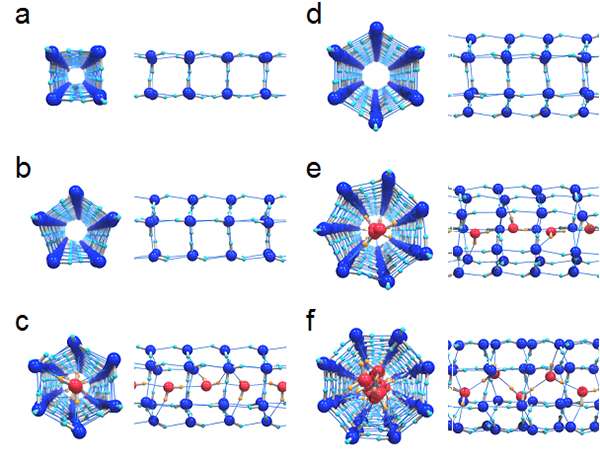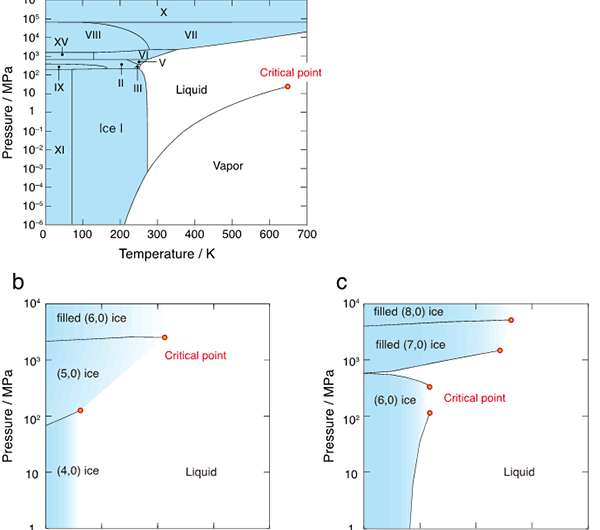Evidence for solid-liquid critical points of water in carbon nanotubes

Many physicists do not accept the idea that a solid-liquid phase boundary can terminate at a critical point—a unique state where two phases lose their separate identities. Why do they not? The authoritative textbook by Landau and Lifshitz says that "we can say only that a particular symmetry property exits or does not exist; ... The critical point therefore cannot exist for such phases." But since 2001, the possibility of the solid-liquid critical point has been reported in computer-simulation studies of water in nanopores. In fact, there is no rigorous proof for the nonexistence of the solid-liquid critical point.
Kenji Mochizuki and Kenichiro Koga at Okayama University provided unambiguous evidence to support the solid-liquid critical point for a class of water in nanotubes by performing extensive molecular dynamics simulations: macroscopic solid-liquid phase separation below a critical temperature Tc, diverging heat capacity and isothermal compressibility at around Tc, and the loci of response function maxima (the Widom lines) above Tc.
Figure 1 shows the hydrogen bond structures of six crystals of ice formed in carbon nanotubes with diameters of 1.11 nm and 1.25 nm. The researchers found that all of the first-order phase boundaries between the ice and liquid eventually ceased to exist at the critical points, as shown in Figure 2. The T-P phase diagram is very different from that of bulk water, where ice regions are completely surrounded by the first-order phase boundaries (solid black lines).
The researchers also gave a microscopic explanation to a simple, yet unanswered, question: how can liquid water continuously freeze to crystalline ice? They found dynamic fluctuations of microscopic domains of water and ice near the critical point–a microscopic picture of water in the course of gradual freezing or melting.
The critical points in confined water are ubiquitous and can be found at ambient conditions by tuning the pore diameter, and therefore one of the potential applications is to use the tunable critical fluctuations in order to facilitate chemical reactions, structural changes in biological molecules, and formation of biomolecules assembly in water.

More information: "Solid-liquid critical behavior of water in nanopores." Proc. Natl. Acad. Sci. USA (2015) (DOI): 10.1073/pnas.1422829112
Provided by Okayama University




















